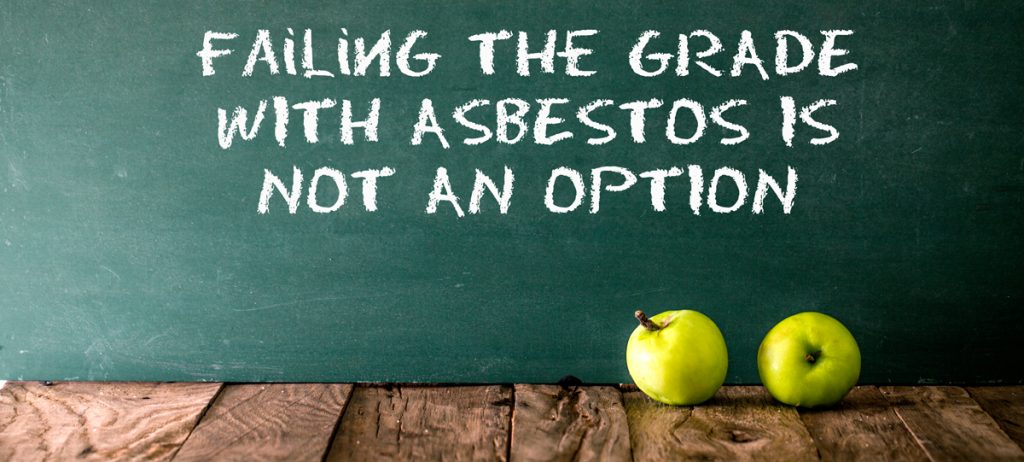
In 2015, a new report was published entitled, Failing the Grade: Asbestos in America’s Schools, from the office of U.S. Senator Edward Markey (D-MA). The report states that two-thirds of the school districts across 15 states have acknowledged the presence of asbestos in their schools.
What became apparent in the report is that asbestos brings a lot of unknown answers and scenarios surrounding it, such as:
- How do I know if asbestos is present?
- What are the dangers associated with it?
- How can it safely and cost-effectively be removed?
These unknowns have caused analysis paralysis; whereby leaving individuals with an overwhelming sensation and uncertainty of where to start or how to go about it, so in turn they do nothing. Or they may think it does not apply to them and what they don’t know can’t hurt them, right? But the awful truth is that asbestos is very dangerous and it is all of our responsibilities to ensure the proper education and actions are taken to raise awareness of what asbestos is and the dangers it can impose.
Asbestos remains a large problem in schools throughout the United States, so beyond raising awareness of our teachers, parents, and the students – it is simultaneously important to enforce action. The Asbestos Information Act of 1988, a one-time publication, is now outdated. The report produced by Senator Markey calls for updating the Act to provide consumers with current information on asbestos-containing products. It also calls for:
- the EPA to evaluate states’ Asbestos Hazard Emergency Response Act (AHERA) programs every ten years
- require the states to communicate information to the EPA on their progress with implementation; and
- increase funds available AHERA enforcement.
This is a report we can get behind. As an environmental services company, we know all too well the intricacies of asbestos and other harmful substances to our environment. We also know just how fast-paced the day-to-day is for everyone, schools included. The best place to start is prioritizing time to the asbestos concerns facing our schools today, and then in that time, identify if asbestos is present, and if it is, outline an action plan for educating and remediating the dangerous substance.
Learn more about our asbestos services here.
